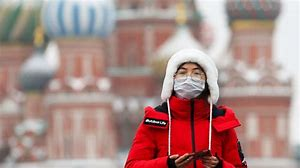Epidemics of infectious diseases behave in different ways but the 1918 influenza pandemic that killed more than 50 million people is regarded as a key example of a pandemic that occurred in multiple waves, with the latter more severe than the first, and has been replicated – albeit more mildly – in subsequent flu pandemics.
Other flu pandemics – including in 1957 and 1968 – all had multiple waves. The 2009 H1N1 influenza A pandemic started in April 2009 and was followed, in the US and temperate northern hemisphere, by a second wave in the autumn.
How and why multiple-wave outbreaks occur, and how subsequent waves of infection can be prevented, has become a staple of epidemiological modelling studies and pandemic preparation, which have looked at everything from social behaviour and health policy, to vaccination and the build-up of community immunity, also known as herd immunity.
While second waves and secondary peaks within the period of a pandemic are technically different, the concern is essentially the same: the disease coming back in force.
Is there evidence of coronavirus coming back elsewhere?
This is being watched very carefully. Without a vaccine, and with no widespread immunity to the new disease, one alarm is being sounded by the experience of Singapore, which has seen a sudden resurgence in infections despite being lauded for its early handling of the outbreak.
Although Singapore instituted a strong contact tracing system for its general population, the disease re-emerged in cramped dormitory accommodation used by thousands of foreign workers with inadequate hygiene facilities and shared canteens.
With 1,426 new cases reported on Monday and nine dormitories – the biggest of which holds 24,000 men – declared isolation units, Singapore’s experience, although very specific, has demonstrated the ability of the disease to come back strongly in places where people are in close proximity and its ability to exploit any weakness in public health regimes set up to counter it.
A small upwards fluctuation late last week in the number of German infections – another country credited with handling its outbreak well via extensive testing and tracing – has also drawn attention even as the country moved to loosen restrictions.
And despite China’s apparent success in bringing the outbreak in Hubei province under control, there has been a spike in cases in the country’s north.
A new cluster of coronavirus cases in the north-eastern city of Harbin near the Russian border has forced authorities to impose fresh lockdowns, after reporting near-zero local transmissions in recent weeks.
All of this raises questions over when, and how, to reduce lockdowns to avoid a second wave or resurgence.
Source: MSN




